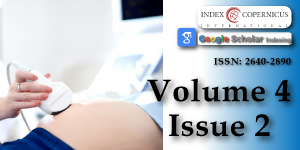Factors associated with Female Genital Mutilation among daughters of reproductive aged women at Academic Charity Teaching Hospital (ACTH)
Main Article Content
Abstract
Introduction: It is estimated that more than 200 million girls and women alive today have undergone female genital mutilation. Female genital mutilation still remains to be a serious problem for large proportion of women in most sub-Saharan Africa countries including Sudan, with a high prevalence of 88%.
Objective: The main objective was to identify the factors associated with FGM among daughters of reproductive aged woman.
Materials and methods: A community based cross-sectional study was conducted on 200 mothers, the total sample was collected in ACTH based on the number of reproductive age mothers with at least one daughter older than 5 years. A structured and interviewer administered questionnaire was used to collect data. The data obtained was analyzed by the use of the SPSS software.
Results: Out of 200 mothers, 113 (56.5%) had at least one circumcised daughter. Knowledge about genital mutilation (AOR = 4.29, 95% CI: 1.13-15.37), attitude (AOR = 48.53, 95% CI: 14.45-198.69) and mothers circumcision status (AOR = 14.03, 95% CI: 2.81- 95.45) were the most significantly associated with FGM. Furthermore, having good knowledge, positive attitude, high socio-economic status, being literate, being of Christian religion and living in urban area had lower odds of having a circumcised daughter.
Conclusion: In this study, more than half of the mothers had at least one circumcised daughter. Mothers’ knowledge, attitude, circumcision status, socio-economic status, age, residence, educational level and religion were significantly associated with female genital mutilation.
Article Details
Copyright (c) 2021 Shiddo D, et al.

This work is licensed under a Creative Commons Attribution 4.0 International License.
Prevalence of female genital mutilation. 2021. http://www.who.int/reproductivehealth/topics/fgm/prevalence/en/Female genital mutilation. 2021. http://www.who.int/mediacentre/factsheets/fs241/en/
Female genital mutilation (FGM) frequently asked questions. 2021. https://www.unfpa.org/resources/female-genital-mutilation-fgm-frequently-asked-questions#where_practiced
Female genital mutilation/cutting country profile. 2021. https://reliefweb.int/sites/reliefweb.int/files/resources/FGMC_SDN_Profile.pdf
2021. PubMed: https://www.unicef.org/protection/sudan_71891.html
Islam M, Uddin M. Female Circumcision in Sudan: Future Prospects and Strategies for Eradication. International Family Planning Perspectives. 2021; 27: 71.
2021. http://www.refworld.org/pdfid/54bce53d4.pdf
Health risks of female genital mutilation (FGM). 2021. https://www.who.int/teams/sexual-and-reproductive-health-and-research/areas-of-work/female-genital-mutilation/health-risks-of-female-genital-mutilation
Satti A, Elmusharaf S, Bedri H, Idris T, Hashim M, et al. Prevalence and determinants of the practice of genital mutilation of girls in Khartoum, Sudan. Ann Trop Paediatr. 2006; 26: 303-310. PubMed: https://pubmed.ncbi.nlm.nih.gov/17132295/
Mitike G, Deressa W. Prevalence and associated factors of female genital mutilation among Somali refugees in eastern Ethiopia: a cross-sectional study. BMC Public Health. 2009; 9: 264. PubMed: https://www.ncbi.nlm.nih.gov/pmc/articles/PMC2724517/
Inungu J, Tou Y. Factors associated with female genital mutilation in Burkina Faso. J Public Health Epidemiol. 2013; 5: 20-28.
Setegn T, Lakew Y, Deribe K. Geographic Variation and Factors Associated with Female Genital Mutilation among Reproductive Age Women in Ethiopia: A National Population Based Survey. PLoS One. 2016; 11: e0145329. PubMed: https://pubmed.ncbi.nlm.nih.gov/26741488/
Pashaei T, Rahimi A. Related Factors of Female Genital Mutilation (FGM) in Ravansar (Iran). J Women's Health Care. 2012; 01.
Mulusew A. Female Genital Mutilation and Associated Factors in GonchaSiso-Enessie District, East Gojjam Zone, Amhara Region, Ethiopia (2012). J Health Med Informat. 2013; 04.
Ejigu Y, Tiruneh G, Kibret GD. Prevalence and Contributing Factors of Female Genital Cutting in Debaytilatgin District, Northwest Ethiopia. Clin Mother Child Health. 2014; 11.
Gajaa M, Wakgari N, Kebede Y, Derseh L. Prevalence and associated factors of circumcision among daughters of reproductive aged women in the Hababo Guduru District, Western Ethiopia: a cross-sectional study. BMC Women's Health. 2016; 16.
Desalegn S, Negussie D, Gamachu F, Tadele K, Markos D. Prevalence and associated factors of female genital mutilation among high school students in Dale Wabera Woreda, Oromia Regional State, Ethiopia. Int J Med Med Sci. 2017; 9: 72-78.
Emam E, El-maghawry AM, Labeeb SA. Cultural Awareness about Female Genital Mutilation among Female Employees of Minia University. J Am Sci. 2011; 7.
Shabila N. Mothers ’ factors associated with female genital mutilation in daughters in the Iraqi Kurdistan Region. Women Health. 2016; 57: 283-294. PubMed: https://pubmed.ncbi.nlm.nih.gov/26984379/
Dalal K, Lawoko S, Jansson B. Women's attitudes towards discontinuation of female genital mutilation in Egypt. J Inj Violence Res. 2010; 2: 41-47. PubMed: https://pubmed.ncbi.nlm.nih.gov/21483197/
Gebremariam K, Assefa D, Weldegebreal F. Prevalence and associated factors of female genital cutting among young adult females in Jigjiga district, eastern Ethiopia: a cross-sectional mixed study. Int J Womens Health. 2016; 8: 357-365. PubMed: https://pubmed.ncbi.nlm.nih.gov/27563257/
Fikrie Z. Factors associated with perceived continuation of females ’ genital mutilation among women in Ethiopia. Ethiopian J Health Sci. 2011; 20: 49-53. PubMed: https://pubmed.ncbi.nlm.nih.gov/22434960/
UNICEF publications. Unicef.org. 2021. PubMed: https://www.unicef.org/publications/files/FGM-C_final_10_October.pdf
Van Rossem R, Meekers D, Gage A. Trends in attitudes towards female genital mutilation among ever-married Egyptian women, evidence from the Demographic and Health Surveys, 1995–2014: paths of change. Int J Equity Health. 2016, 15: 31. PubMed: https://pubmed.ncbi.nlm.nih.gov/26911243/
Hayford S, Trinitapoli J. Religious Differences in Female Genital Cutting: A Case Study from Burkina Faso. J Sci Study Relig. 2011, 50: 252-271. PubMed: https://pubmed.ncbi.nlm.nih.gov/21969936/
Ismail HS. Factors Influencing the Continuation of Female Genital Mutilation/Cutting Practice in Sudan. 2012.
Azeze G, Williams A, Tweya H, Obsa M, Mokonnon T, et al. Changing prevalence and factors associated with female genital mutilation in Ethiopia: Data from the 2000, 2005 and 2016 national demographic health surveys. PLoS One. 2020; 15: e0238495. PubMed: https://pubmed.ncbi.nlm.nih.gov/32881931/

